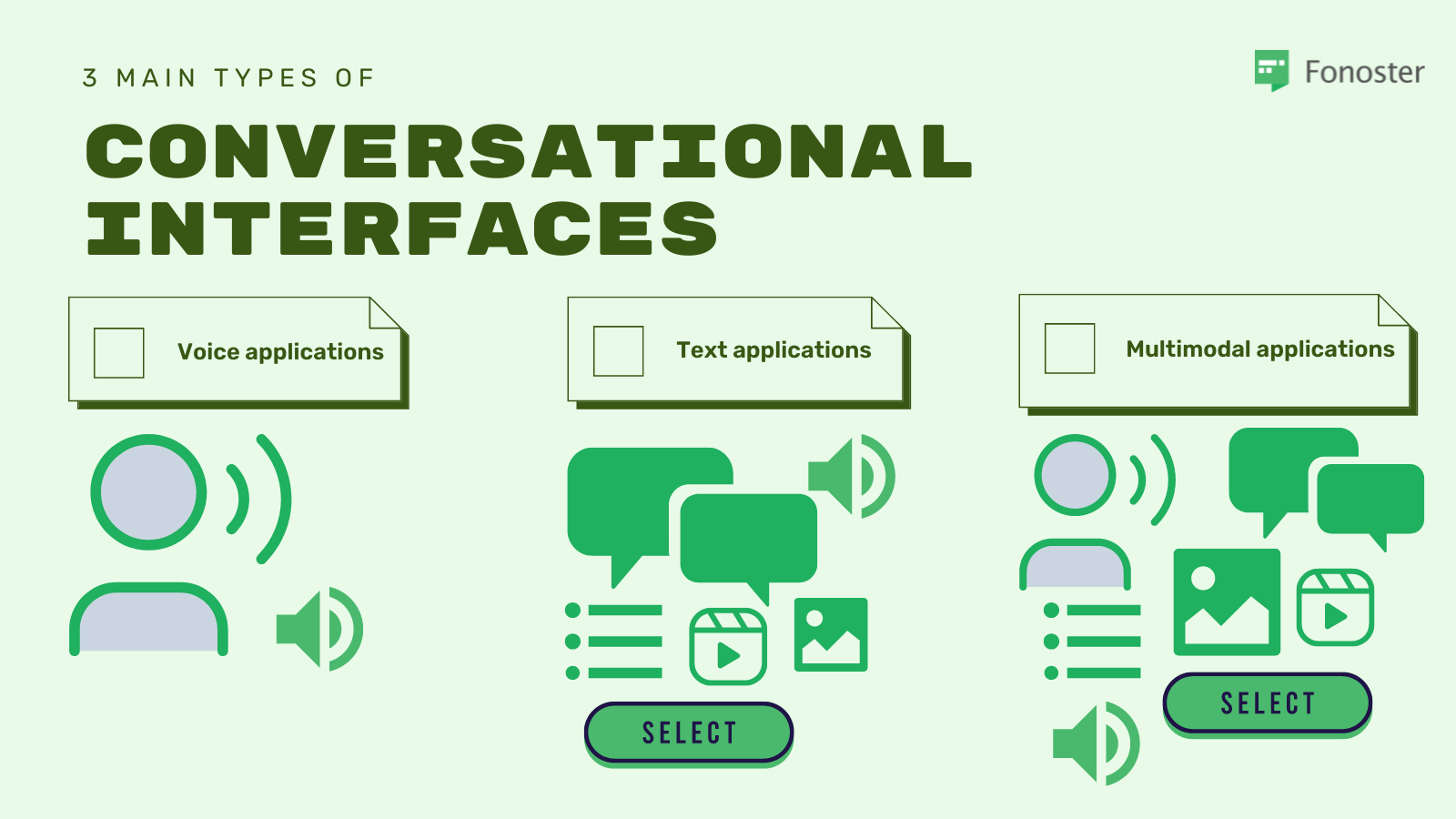There are 3 main types of Conversational Interfaces. Depending on the most appropriate for your users, we can establish some very clear differences and elements in common between them.

Voice applications
They let you complete your task and control your device with spoken commands. In return you'll get audible responses from the application.
These are the elements of a voice-only interface:
- Voice commands
- Audible response from assistant
- Audible list of options
- Descriptive options for users
- Sometimes a button is present to help start or end conversation
Text applications
Also known as chat applications, they allow the user to complete their task and interact with the interface by sending and receiving messages.
These are the elements of a text-only interface:
- Text Commands
- Written response from assistant with sound
- Written list of options
- Video or Images to help the users make a choice
- Button available to make certain selections easier
Multimodal applications
They allow the user to interact with the interface by combining different features from voice and text, taking advantage of the strengths of each.
These are the elements of a multimodal interface:
- Voice or Text Commands
- Written or audible response from assistant
- Audible or written list of options
- Video or Images to help the users make a choice
- Button available to make certain selections easier
Join the conversation
Fonoster is developed in the open. Here are some of the channels you can use to reach us:
GitHub discussions:
Twitter: @fonoster
